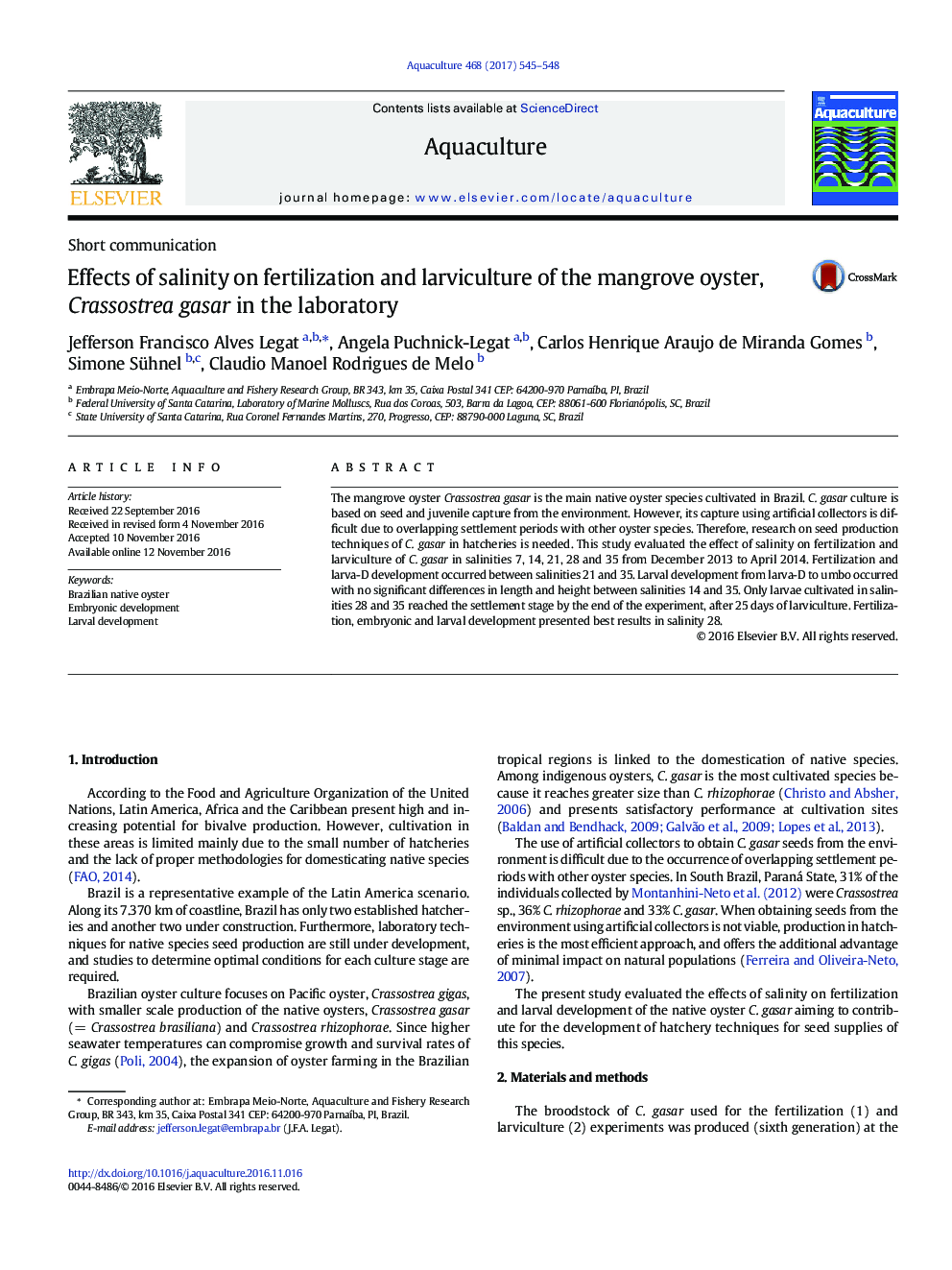| Article ID | Journal | Published Year | Pages | File Type |
|---|---|---|---|---|
| 5539487 | Aquaculture | 2017 | 4 Pages |
Abstract
The mangrove oyster Crassostrea gasar is the main native oyster species cultivated in Brazil. C. gasar culture is based on seed and juvenile capture from the environment. However, its capture using artificial collectors is difficult due to overlapping settlement periods with other oyster species. Therefore, research on seed production techniques of C. gasar in hatcheries is needed. This study evaluated the effect of salinity on fertilization and larviculture of C. gasar in salinities 7, 14, 21, 28 and 35 from December 2013 to April 2014. Fertilization and larva-D development occurred between salinities 21 and 35. Larval development from larva-D to umbo occurred with no significant differences in length and height between salinities 14 and 35. Only larvae cultivated in salinities 28 and 35 reached the settlement stage by the end of the experiment, after 25Â days of larviculture. Fertilization, embryonic and larval development presented best results in salinity 28.
Related Topics
Life Sciences
Agricultural and Biological Sciences
Aquatic Science
Authors
Jefferson Francisco Alves Legat, Angela Puchnick-Legat, Carlos Henrique Araujo de Miranda Gomes, Simone Sühnel, Claudio Manoel Rodrigues de Melo,
